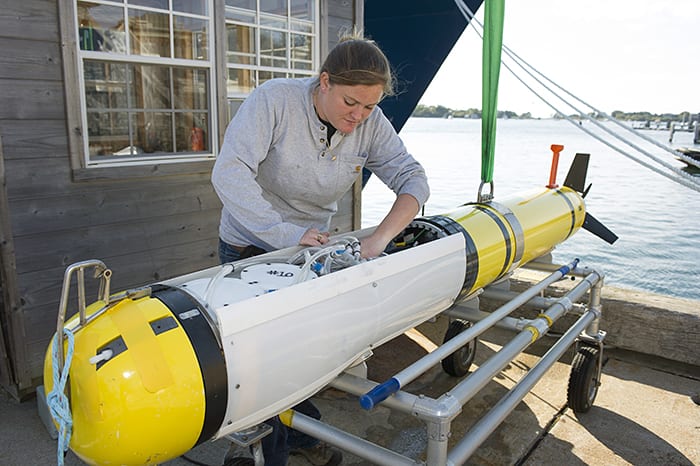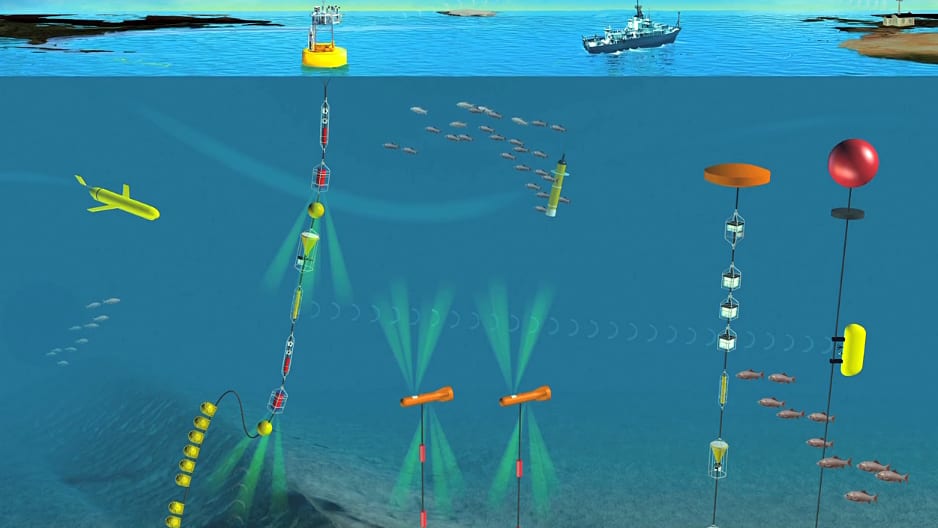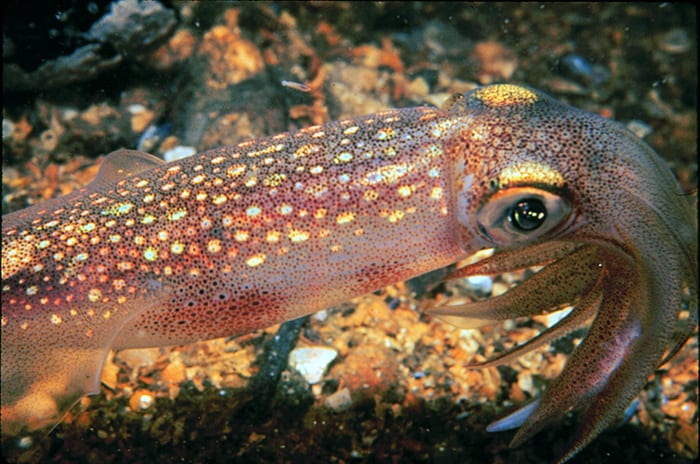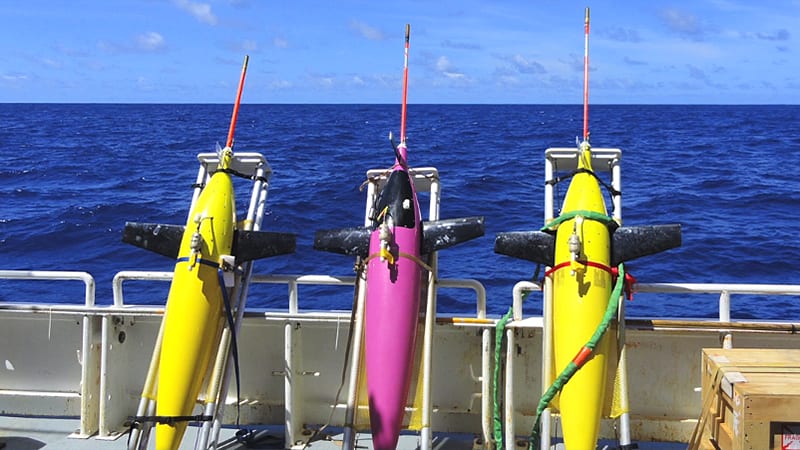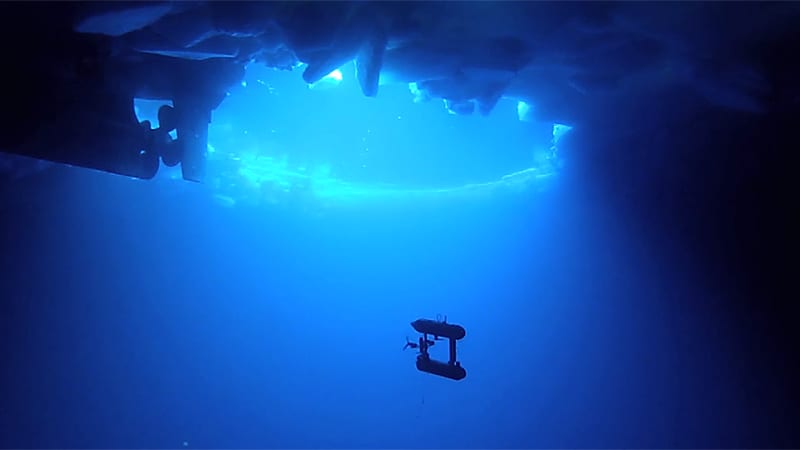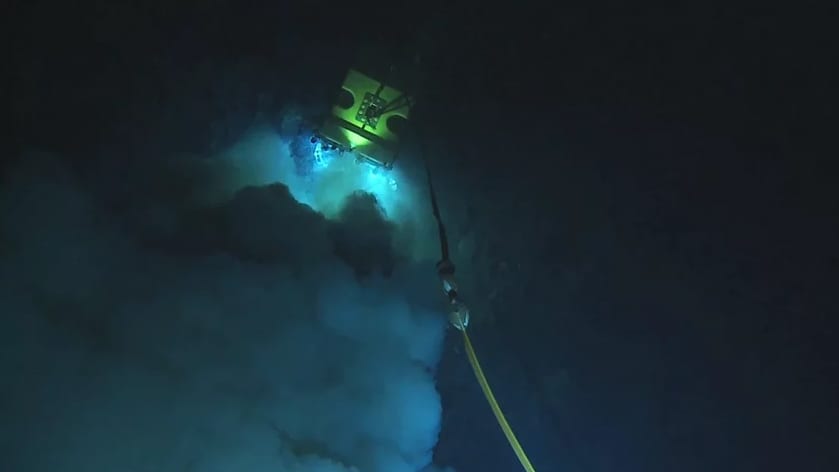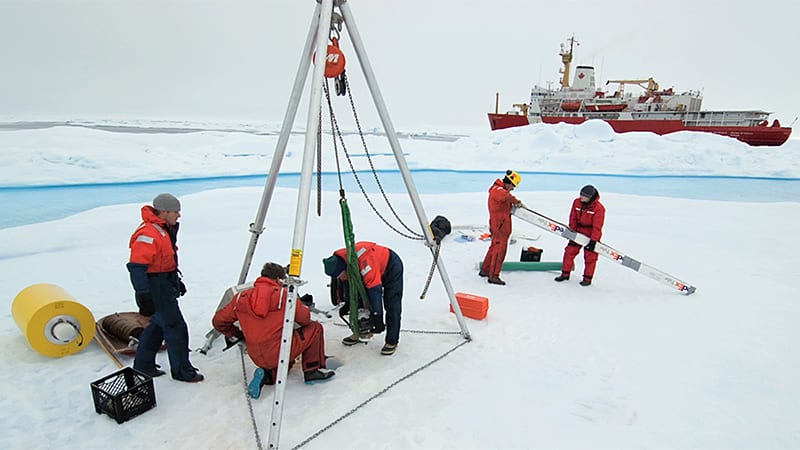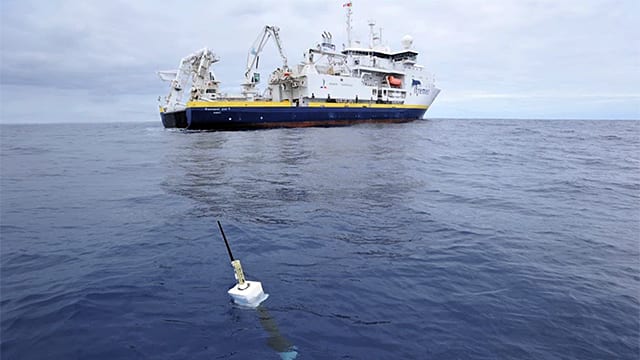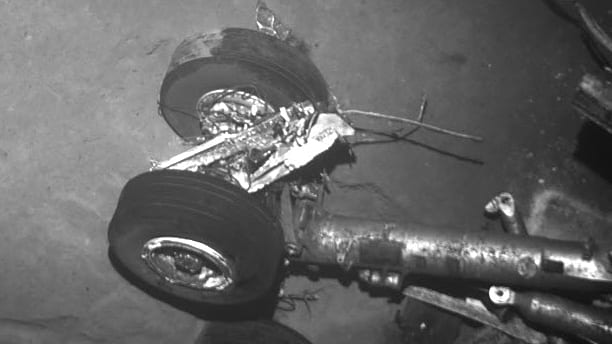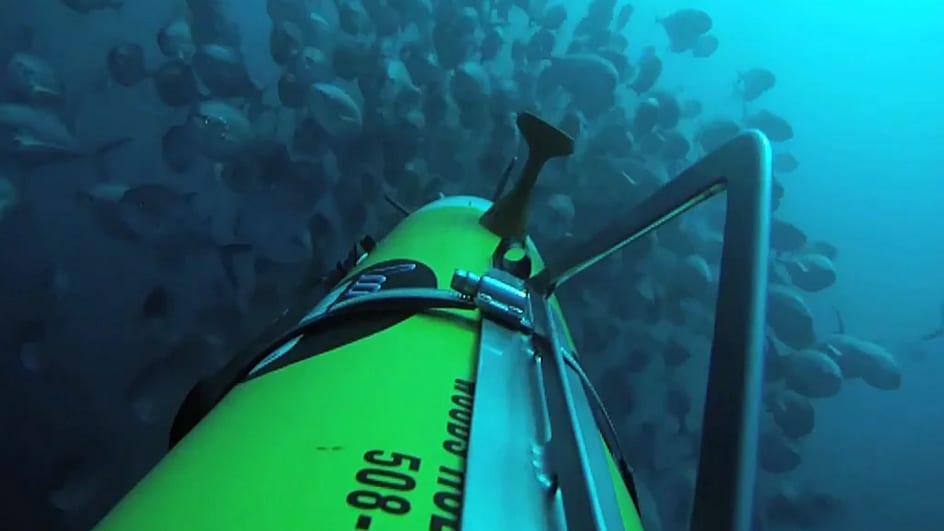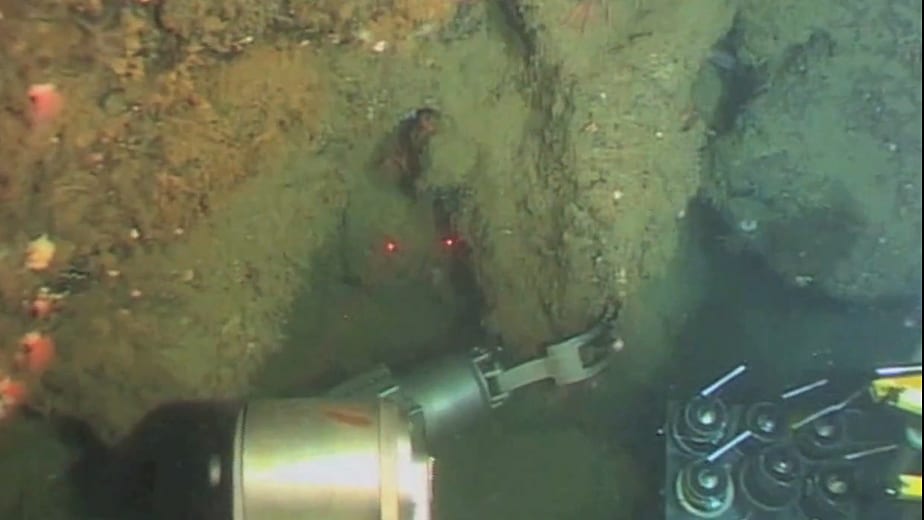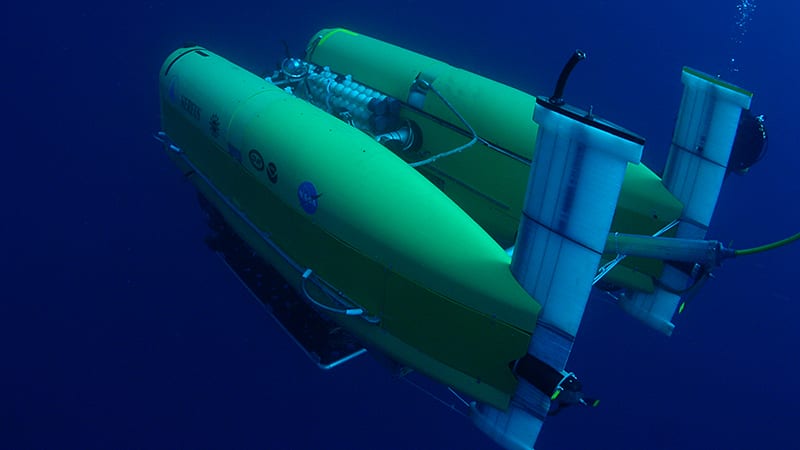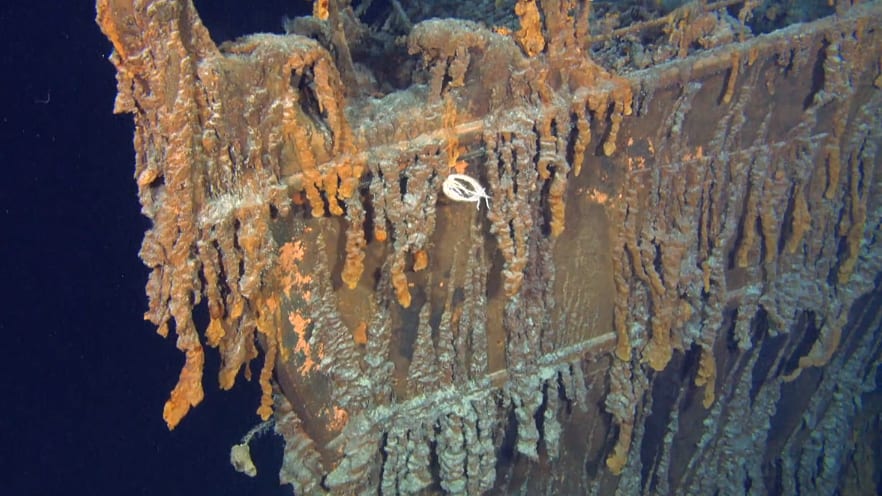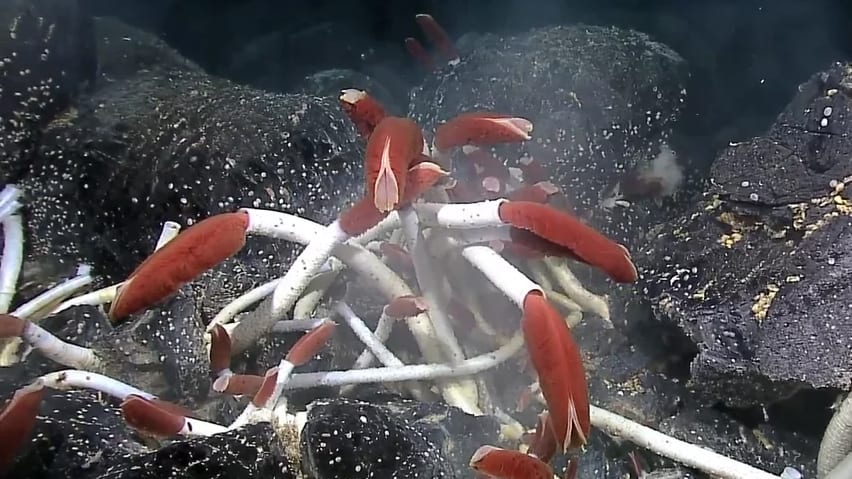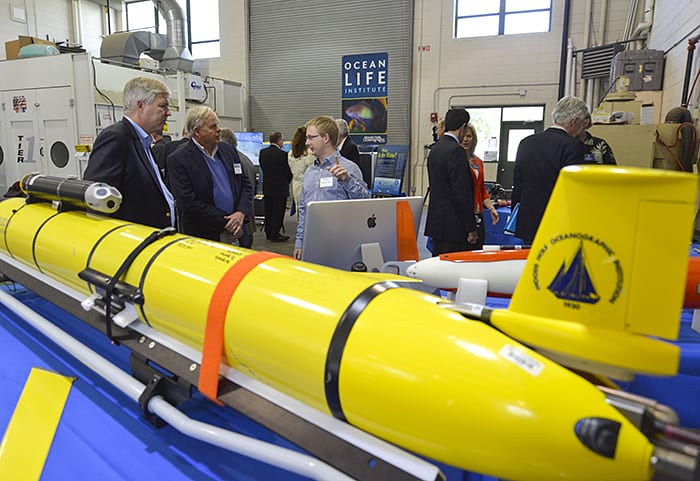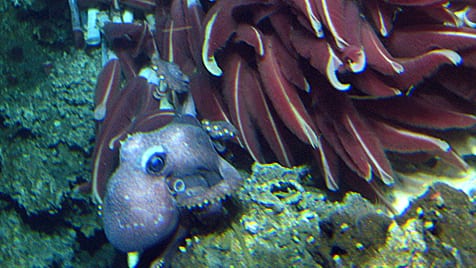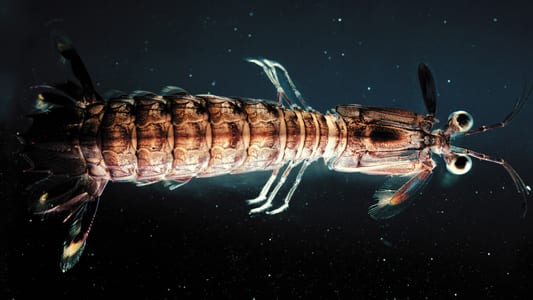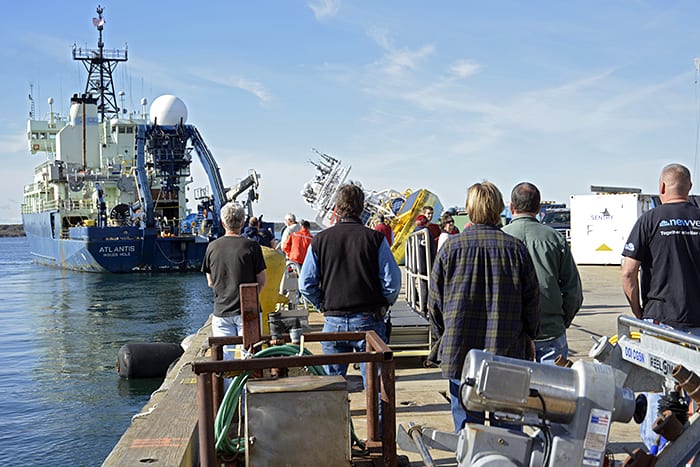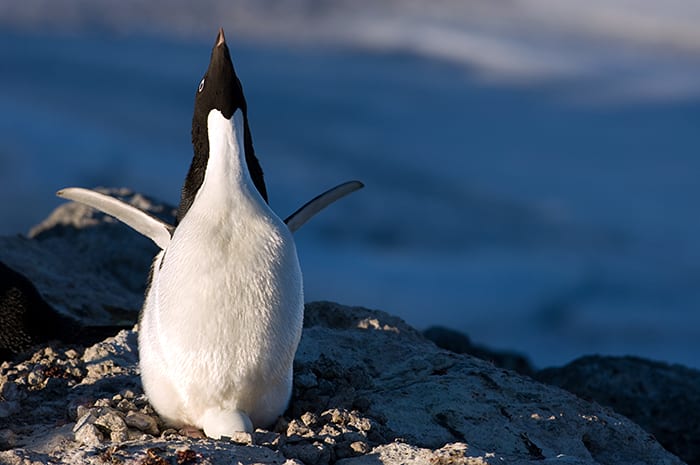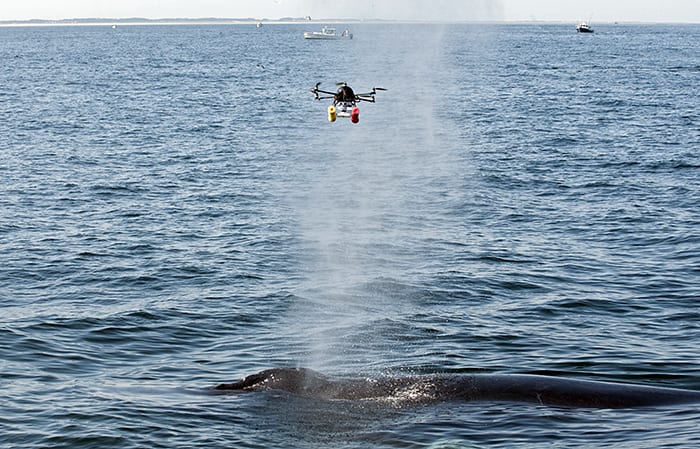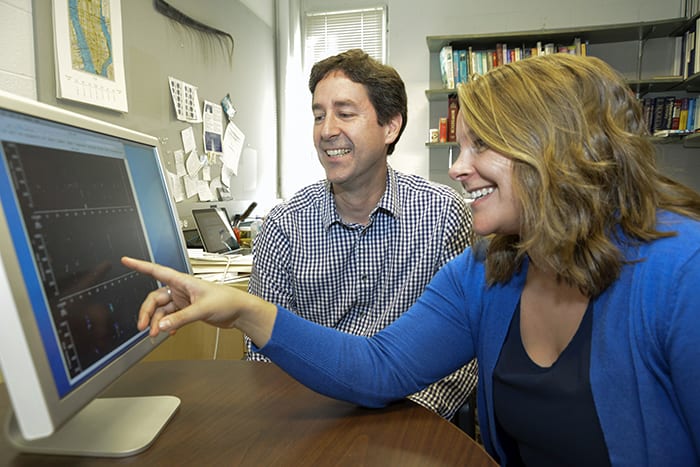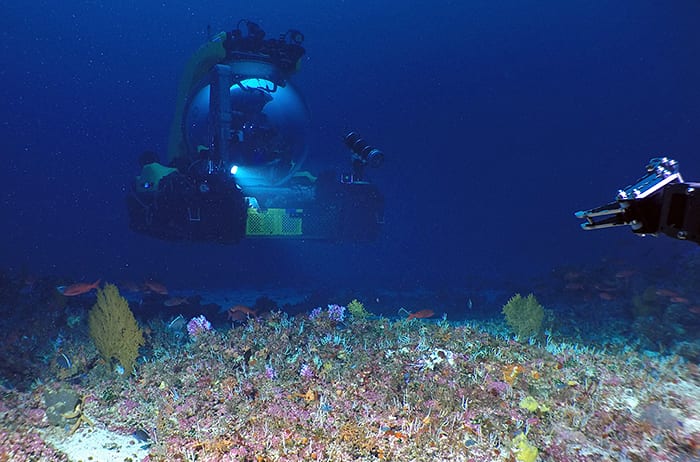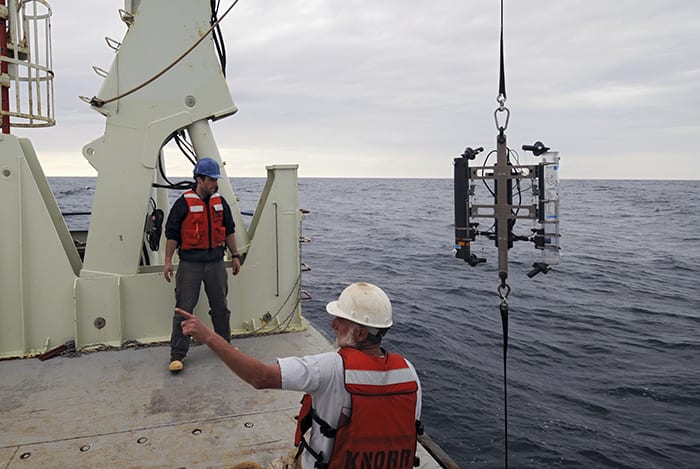Multimedia Items
Sampler for Shallow Seas
WHOI engineer Kaitlyn Tradd works on a new sampling system called SUPR-REMUS. The device consists of a multi-sampling Suspended Particulate Rosette sampler (SUPR) mounted on a REMUS autonomous […]
Read MoreOcean Robots: The Future of Marine Robotics
The word ‘robot’ means a lot of things to a lot of people. So what exactly is an ocean robot and what do they do? Find out what they are […]
Read MoreSerene Squid
Squid such as this Dortyteuthis pealeii are common prey for many fish, whales, and even humans. WHOI researchers have studied how whales use sonar to find squid, how humans might […]
Read MoreOcean Robots: Mapping Salinity
The saltiness of the ocean varies across large and small scales in ways that are sometimes linked to changing global water cycle. Mapping salinity requires robots like gliders to make […]
Read MoreOcean Robots: Sea Ice
The ice-covered ocean is a notoriously difficult environment to study. Autonomous SeaBED vehicles took to the challenge, mapping the underside of floating sea ice and giving scientists a look at […]
Read MoreOcean Robots: Underwater Volcano
In 2009, oceanographers using the remotely operated vehicle (ROV) Jason recorded the first video and still images of a deep-sea volcano actively erupting molten lava on the seafloor.
Read MoreOcean Robots: Arctic Ocean
Scientists are using robotic platforms like the Ice-Tethered Profiler to give them a look beneath ice-covered waters in order to understand conditions in the fragile and fast-changing Arctic Ocean.
Read MoreOcean Robots: Open Ocean
The open ocean is vast and deep—something only an army of robotic Argo floats could begin to map in ways that help scientists understand processes that play out far from […]
Read MoreOcean Robots: Air France Flight 447
Questions surrounding the disappearance of Air France flight 447 could only be answered by finding the wreckage of the airplane on the rugged seafloor of the mid-ocean ridge—a job designed […]
Read MoreOcean Robots: Continental Shelfbreak
The edge of the North American continental shelf is a dynamic place where conditions create a vibrant and productive marine ecosystem. REMUS 100 is helping reveal just how special the […]
Read MoreOcean Robots: Hydrocarbon Seeps
Places where hydrocarbons naturally seep from the seafloor provide a way to study how oil spills in the ocean change over time. But scientists need vehicles like Sentry, Jason, or […]
Read MoreOcean Robots: Challenger Deep
Exploring Challenger Deep requires a special tool—one like Nereus designed specifically to reach the ocean’s greatest depths and take scientists places they’ve never been before.
Read MoreOcean Robots: RMS Titanic
After RMS Titanic was discovered in 1985, scientists returned several times to photograph and map the fabled wreck, shedding light on how it sank, and how wrecks around the world […]
Read MoreOcean Robots: Hydrothermal Vents
Since they were discovered in the East Pacific in 1977, hydrothermal vents have captivated scientists and the public alike. New search methods using underwater robots are helping discover vent sites […]
Read MoreGliders Explained
The “Ocean Institutes Science Fair” at the fall 2015 Board and Corporation meeting at WHOI featured displays describing research supported by the four WHOI Ocean Institutes. Here, scientist Robert […]
Read MoreWith Gratitude
Newly elected officers of the WHOI Board and Corporation presented Newt Merrill with a gift recognizing his eight years of service as chairman of the WHOI Board of […]
Read MoreLife at Vents and Seeps
Shellfish
Sailing Into 2016
Happy New Year
Happy New Year, to everyone from the Antarctic (where this Adelie penguin lives) to the Arctic and all points in between.(Photo by Chris Linder, Woods Hole […]
Read MoreDrones in the Mist
This summer, WHOI scientists, including Michael Moore, director of the WHOI Marine Mammal Center, and microbiologist Amy Apprill, and colleagues from NOAA announced the use of drones as […]
Read MoreSeeing Voices
WHOI marine ecologist Mark Baumgartner reviews whale vocalizations on a public web site with Julianne Gurnee, an analyst with the Passive Acoustic Research Group at the Northeast Fisheries […]
Read MoreDeep Partner
The submersibles DeepRover2 (pictured) and Nadir survey a field of soft corals and sponges at about 80 meters depth off Santiago Island in the Galapagos Archipelago. During a three-week […]
Read More
